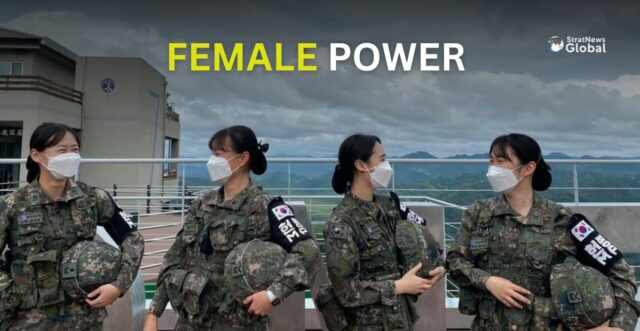Many countries in Southeast Asia are facing the problem of an aging population, but for South Korea, it has become a matter of national security now.
A persistently low birth rate has caused a rapid decline in the number of available conscripts, threatening the sustainability of its current military system. A new bill currently under discussion seeks to accept women as rank-and-file soldiers, a move that could mark a significant shift in the traditionally male-dominated conscript system.
The bill, submitted by Rep. Kim Mi-ae of the ruling People Power Party, proposes that military authorities open barracks to women and accept voluntary female applicants for enlisted service.
Currently, women can only serve as officers or non-commissioned officers. Kim emphasized that “a drastic measure is needed to ensure national security,” citing demographic projections that the number of eligible male conscripts could fall to just 100,000 per year within two decades. The bill would also mandate annual reports to parliament on the experiences of female soldiers to ensure accountability and transparency.
South Korea’s conscription system, which mandates nearly all able-bodied men to serve in the military, has long been a central part of national identity. However, with the birth rate declining and the pool of eligible conscripts shrinking rapidly, the sustainability of this model is in question.
South Korea’s active-duty military has gotten much smaller, shrinking from 560,000 soldiers in 2019 to 450,000 by July 2025. This is below the 500,000 troops many experts say are needed to maintain security under the current agreement with North Korea, which still has about 1 million soldiers. The army has been hit the hardest, losing 100,000 enlisted soldiers in just six years.
In a rapidly evolving security environment, especially amid tensions with North Korea and growing competition in military technology, South Korea can no longer rely solely on manpower. To stay prepared, it needs to invest in advanced technologies like autonomous drones, hypersonic missiles, and long-range ballistic weapons.
As South Korea stands at a crossroads, embracing both military modernization and social reform is not just strategic, it’s essential for the nation’s future.





